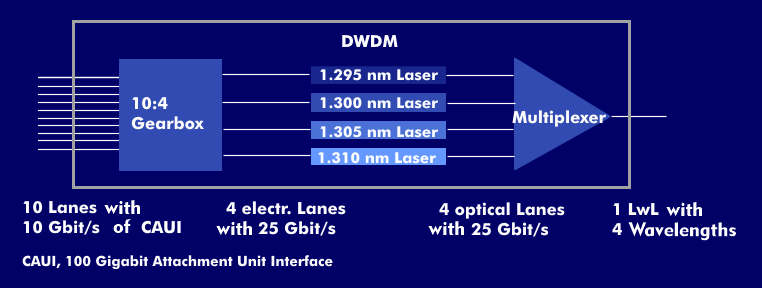IEEE 802.3 100GBase-LR4
Under 100 Gigabit Ethernet, there are several 100GbE interfaces for fiber optics, one of which is 100GBase-LR4, which can bridge distances of up to 10 km.
The designation 100GBase indicates that the interface supports a data rate of 100 Gbit/s (100G) and operates in baseband technology( BASE). The specific characteristics can be seen from the suffix LR4. The letter combination LR stands for Long Reach and concerns the wavelengths in the second optical window. The 100GBase-LR4 interface operates with 64B66B coding, and the number 4 indicates that transmission is by means of DWDM technology via four DWDM paths of a duplex monomode fiber at 1,310 nm in both directions.
The four wavelengths are at 1,295 nm, 1,300 nm, 1,305 nm and 1,310 nm, spaced 5 nm apart. The center frequencies are between 231 THz (1,295 nm) and 229 THz (1,310 nm). The effective data rate per DWDM path is 25 Gbit/s, resulting in a baud rate of 25.78125 Gbit/s for 64B66B coding.
Technically, the 100GBase-LR4 interface is implemented with a CFP module.

